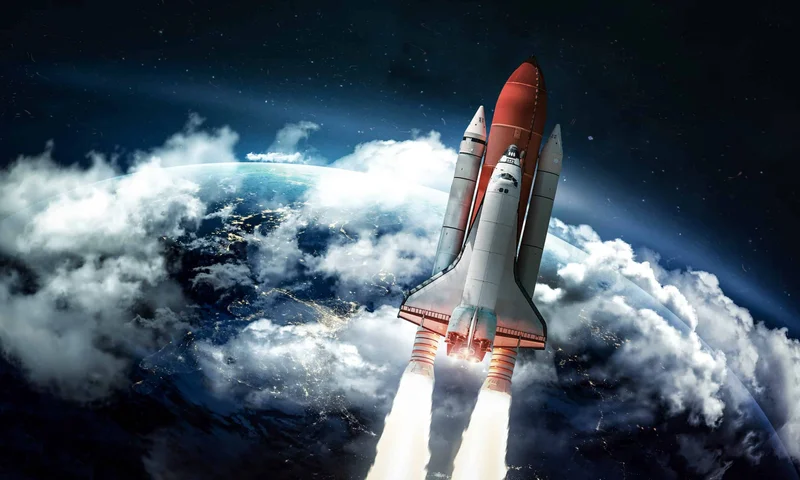SpaceX's Two-Ring Circus: The Boring and the Bonkers
So, let me get this straight. Last week, SpaceX pulled off two completely different missions that perfectly explain the company’s entire schizophrenic identity. In one corner, you had the big, sexy, explosive drama queen: Starship. It flew, it didn’t blow up for a change, and the internet fanboys lost their collective minds. Then, barely 48 hours later, in the dead of night, the company’s real workhorse, a Falcon 9, silently punched another 28 satellites into orbit.
Guess which one got all the headlines?
This is the SpaceX two-ring circus. In one ring, you have the high-wire act—the spectacular, death-defying, headline-grabbing stunt that might end in a fireball. In the other, you have the relentlessly efficient, almost mind-numbingly boring troop of acrobats who perform the same flawless routine three times a week. We’re so obsessed with the former that we’ve completely forgotten the latter is the only reason the circus stays in business.
The Starlink launch last Thursday was a perfect example. At 5:27 a.m., while sane people were still asleep, a Falcon 9 booster—tail number B1095, on its third trip to space—lit up the predawn sky over Cape Canaveral. It was the 130th Falcon 9 launch of 2025. The 91st one this year dedicated solely to building out the Starlink constellation. The booster landed itself perfectly on the drone ship ‘Just Read the Instructions’ for the 138th time. SpaceX sends 28 Starlink satellites to low Earth orbit in predawn launch – Spaceflight Now.
See what I mean? The numbers are so routine they’re practically white noise. It’s become the space equivalent of a FedEx delivery. Imagine the rumble over the Florida coast, a brief, fiery spectacle against the stars that’s become so commonplace it probably doesn't even wake the locals anymore. It’s a stunning technical achievement that has been rendered utterly, beautifully boring through sheer repetition.
And that’s the whole point. This is the real revolution. Not the shiny rocket, but the relentless launch cadence. The Falcon 9 is the spacefaring equivalent of a Toyota Camry—it ain’t glamorous, but it starts every damn time and gets the job done. This boring, repeatable success is what pays the bills. It’s what’s actually changing the world by plastering low Earth orbit with internet satellites. But who wants to read about a reliable sedan when there’s a monster truck rally next door?
The Shiny Distraction We're Supposed to Cheer For
And then there's Starship. The monster truck. The main event.

After a string of what the PR department generously calls "rapid unscheduled disassemblies"—that's "explosions" for us normal folks—Starship V2 finally had a clean flight. It soared, it deployed some pretend satellites, and it even relit an engine in space. The company website put out a statement dripping with self-congratulation: “Every major objective of the flight test was achieved, providing valuable data as we prepare the next generation of Starship and Super Heavy.” SpaceX hits key milestones in Starship megarocket’s 11th test flight: Highlights.
Give me a break. Let's translate that from corporate-speak. "We finally managed to not blow up our giant, experimental rocket, and now we want a parade." This was a huge step. No, 'huge' is what they want you to think—it was a necessary step on a staircase that might as well lead to the moon's attic. They’re already talking about V3, the next version, because V2 just proved it could do the bare minimum.
The real story isn't the successful test flight. The real story is the impossible magic trick they still have to pull off: orbital refueling.
Because of its insane size, Starship can't get to the moon on a single tank of gas. It has to get into orbit and then have other Starships fly up to meet it and top it off. This has never, ever been done before on this scale. It’s like trying to refuel a 747 in mid-air by throwing buckets of jet fuel from another plane. The physics and engineering challenges are monumental. Yet, in all the breathless coverage of the "successful" launch, this little detail gets glossed over as if it’s a minor software update.
They want us to focus on the moon landing, the Mars colony, the grand vision, and honestly... it's a brilliant sleight of hand. While we're all mesmerized by the shiny rocket that might one day go to Mars, the boring old Falcon 9 is quietly conquering Earth's orbit, one 28-satellite batch at a time. Are we really supposed to throw a party because the prototype finally completed a test run? What happens when the real tests begin, the ones involving cryo-fluids and orbital docking with a vehicle that has a history of, well, exploding? The silence on those operational details is deafening.
Maybe I'm the crazy one here. Maybe this is how progress is made—with big, fiery promises and a reliable workhorse paying for it all in the background. But it feels disingenuous. It feels like we’re being sold a ticket to a blockbuster movie when the crew is still trying to figure out how to turn the camera on. Offcourse, the spectacle is amazing, but when the main event is still a decade of "maybe" away, I can't help but feel the real show is the one we're all ignoring.
The Real Trick Is Making You Watch
At the end of the day, SpaceX isn't just a rocket company; it's a media company. Its greatest product isn't the Falcon 9 or even Starship. It's the narrative. The story of a maverick genius building the future. The boring, repetitive Starlink launches are just the foundation—the plumbing and electricity of the whole operation. Starship is the grand theater built on top of it, designed to keep our eyes glued to the stage, cheering for a performance that hasn't even started yet. And damn, it’s working.
